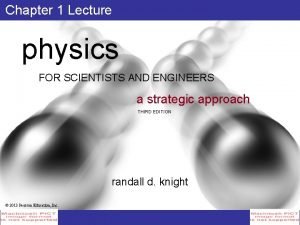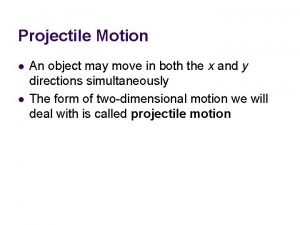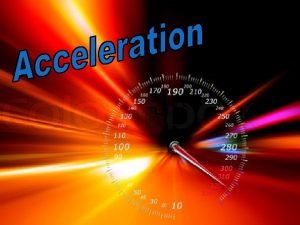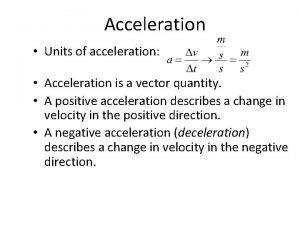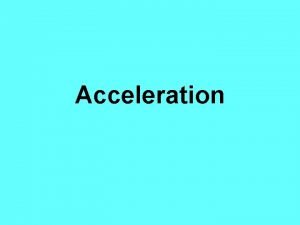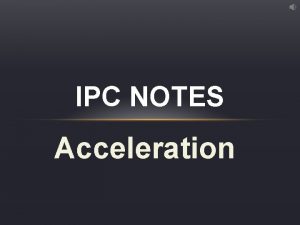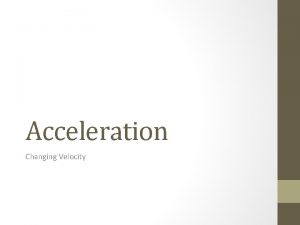What is Acceleration Acceleration is a Vector Rate









- Slides: 9

What is Acceleration? ? • Acceleration is a Vector!! – Rate of change in velocity in a given time interval – Describes how rapidly the velocity of an object is changing Acceleration = Change in velocity / change in time a (average) = Dv / Dt • Units: length / time 2 – e. g. , m/s 2, km/h/s

Average acceleration

Average Acceleration • Other Equations: – Rearranging, Dv = a ave Dt , OR, v(final) = v(initial) + a (avg) Dt

Think About It! • If the acceleration of an object is zero, does that mean that the velocity is zero? Explain. • If the velocity of an object is zero, does that mean that the acceleration must be zero? ? Explain.

Just like Velocity • Acceleration is a vector quantity – Has both a magnitude (speed) AND direction • Can be positive or negative – JUST DIRECTIONAL!!!

Acceleration is the slope of a velocity vs. time curve. Since slope = rise/run, Just as ,

Constant vf = vi + a Δ t Δd = vav Δ t vav = (vf + vi)/2 Δd = vit + 0. 5 at 2 Δt = time d = displacement vi = initial velocity vav = average velocity a = acceleration vf = final velocity

Kinematic Equations for Uniform Acceleration Variables missing acceleration displacement final velocity time Note: do left out for convenience

Practice problems 1. With an average acceleration of -1. 2 m/s 2, how long will it take a cyclist to bring a bicycle with an initial speed of 6. 5 m/s to a complete stop? n 2. A: 5. 4 s Suppose a treadmill has an average acceleration of 4. 7 × 10. 3 m/s 2. a. How much does its speed change after 5. 0 min? b. If the treadmill’s initial speed is 1. 7 m/s, what will its final speed be? n 1. 4 m/s and 3. 1 m/s
 Radial acceleration
Radial acceleration Linear acceleration
Linear acceleration Is radial acceleration the same as centripetal acceleration
Is radial acceleration the same as centripetal acceleration Centripetal acceleration tangential acceleration
Centripetal acceleration tangential acceleration Angular velocity to linear velocity
Angular velocity to linear velocity Translational motion diagram
Translational motion diagram Acceleration vector
Acceleration vector Acceleration vector projectile motion
Acceleration vector projectile motion Centripetal acceleration vector
Centripetal acceleration vector Acceleration vector quantity
Acceleration vector quantity






